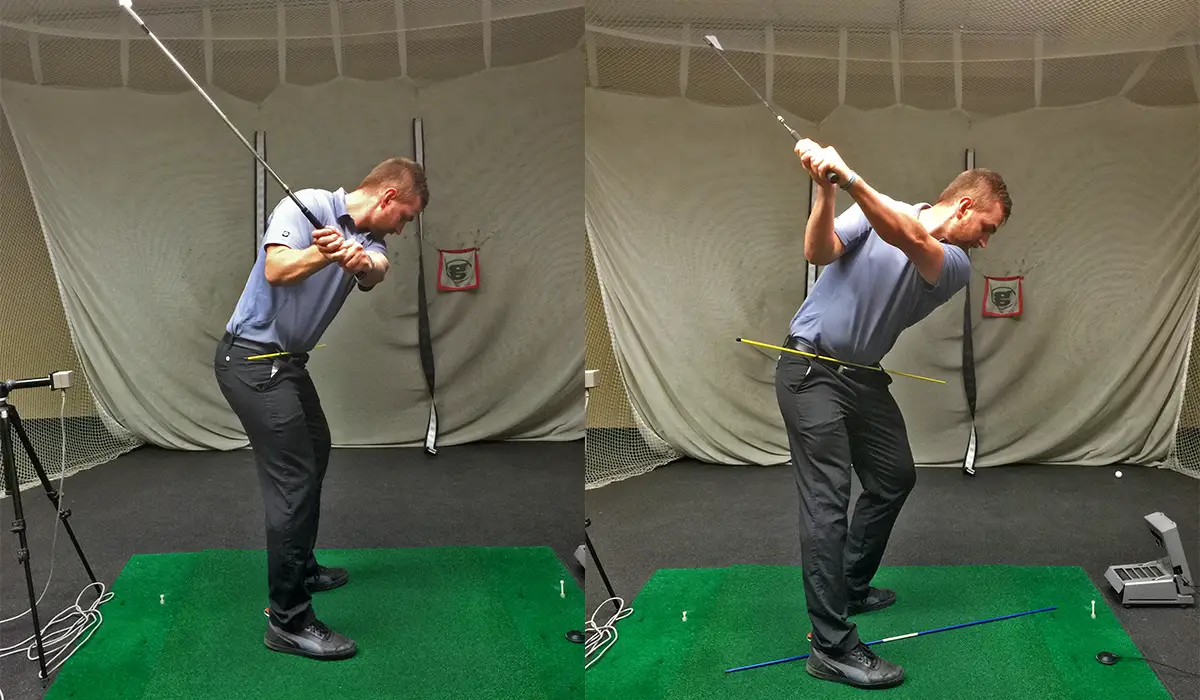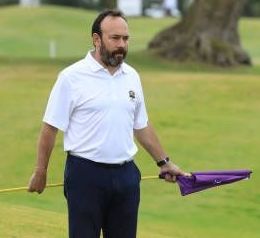There are several ways to do a golf swing. For now, each player has their way of doing it, primarily due to their physical build, age, and other variables to take into account. We agree, and there is unanimity: practically everyone considers that swinging on the plane is the best option. What is this about? Simple. Move your shoulders, arms, and the club in the same plane throughout the swing.
The golf swing on a plane is a successful trademark of some of the best professional players on the PGA Tour and the European Tour. Vijay Singh, Lee Westwood, Zach Johnson, and Rickie Fowler, among others, are prone to taking a more natural swing, making the golf club go flat, and then hitting through the golf ball. The feeling of moving everything on the same plane creates a sense of greater coordination.
The one who introduced the term "swing plane" was Ben Hogan in 1957. He did it in his (must-read) book, "Five Lessons; The Modern Fundamentals of Golf." There, the great golfer explained that the swing plane impacts the trajectory and direction of where your golf ball will eventually land.
REFERENCE TO HOGAN BOOK https://www.amazon.com/Ben-Hogans-Five-Lessons-Fundamentals/dp/0671612972
Hogan is considered one of the greatest golfers in history, along with Jack Nicklaus, Tiger Woods, Gary Player, and Gene Sarazen. It is worth remembering that Hogan has won 64 times on the PGA Tour and has nine victories in the major tournaments: four victories at the US Open, two victories at the Augusta Masters, two at the PGA Championship, and one victory at The British Open.
Many instructors have studied the swing plane based on Ben Hogan's premises. For example, Hank Haney argues that to keep the club in the shaft inclination plane, it must remain parallel to that initial plane throughout the swing, indicated by the shaft inclination itself to the top of the backswing. Haney is an American instructor who coached Tiger Woods for many years. He also worked with two-time major championship winner Mark O'Meara.
What It Means To Swing On Plane
To understand what this swing consists of, we first have to learn about the swing plane. What are we talking about? It is nothing more than the resulting vertical angle between the ground and the circle over which the clubhead travels during the lower part of the arc of our swing.
As we well know, all learning in golf is incorporated step by step, and to be able to fix a knowledge or mechanism in our swing, we need at least 21 days.
To put it more graphically, it means that the player's body is working in harmony with the clubhead. Those who manage to be more vertically in the plane usually achieve more distance. Many describe this as the launch angle.
Undoubtedly, a consistent swing plane allows you to hit the ball more solidly and with a better flight.

Checkpoints for Getting On Plane
One of the common mistakes that all golfers use to make occurs in the stance when removing the club. If they don't do it correctly, the swing starts of the plane. This generates unpredictable swings, with multiple derivations in terms of the ball's impact and its destination within a golf course.
To prevent this is important to feel the correct plane of your swing. And this is achieved by structuring some key concepts. Some good ideas for getting lined up correctly would be the following:
Start with the clubface: hold your driver about 5 inches in front of you, and look closely at the clubface. You have to find that most of the leading edge is facing the centerline of the clubhead.
When you start your backswing, you have to feel the clubface open up, passing through an imaginary point behind your right shoulder. This action allows you to ensure that your swing is in the correct plane when you reach the top of the backswing.
Finally, make sure that the plane is appropriately on top of the backswing plane. Undoubtedly, it is something challenging to check if you are not in front of a mirror. If a mirror is not available, to ensure that the hands are in the correct place on the upper part of the backswing plane, it is recommended to practice the push exercise with the shoulder, noting that it feels the same as on the upper part of the backswing.
Drills for Getting your Swing On Plane
Some specific golf swing plane drills are ideal for any golfer and very useful when swinging flat. They will help with your shots.

Lie Board Drill
The first exercise we propose is the Lie Board drill exercise. A lie Board is a small piece of plastic used by specialists in fitting golf clubs. This check is what makes sure that a golfer's lie angles are correct. This tool is key to ensuring that you do it at ground level at the impact moment.
Alignment Sticks in the Ground Drill
An excellent alternative is applying all the tips we were explaining is to practice shots with an old stick lined up on the ground or use alignment sticks.
Shoulder-push on Plane Drill
Another handy drill is to check the upper part of the swing, using the exercises proposed by Sam Snead and carry them out in a simple way.
ADD VIDEO OF SAM SNEAD https://www.youtube.com/watch?v=WDn_2_kvmBE
Take note of your clubs set
Clubs with a higher loft result in a higher (more vertical) swing plane. This is because we are standing closer to the ball. We could say that the plane of the swing closely resembles the lean angle of the golf club. Likewise, since the swing plane measures the club's movement over a while, it is not recommended to use this variable to adjust the lean angle and our posture.
For now, we take the opportunity to remember the importance of making an excellent fitting and thus be able to play with the corresponding clubs for the strength, weight, and physical conditions of each one.

Enrique Martínez Luque
Enrique Martínez Luque is the Argentina-based golf expert and professional writer. He built his career in the world of golf taking a number of positions. Enrique was the manager of a golf club, director at a federation level, an agent for professional golfers and director institutional relations on the Argentinian Tour. Assissted the professional golfers on major tours for almost 20 years. Worked as the press officer of national and international golf tournaments.
Follow me
